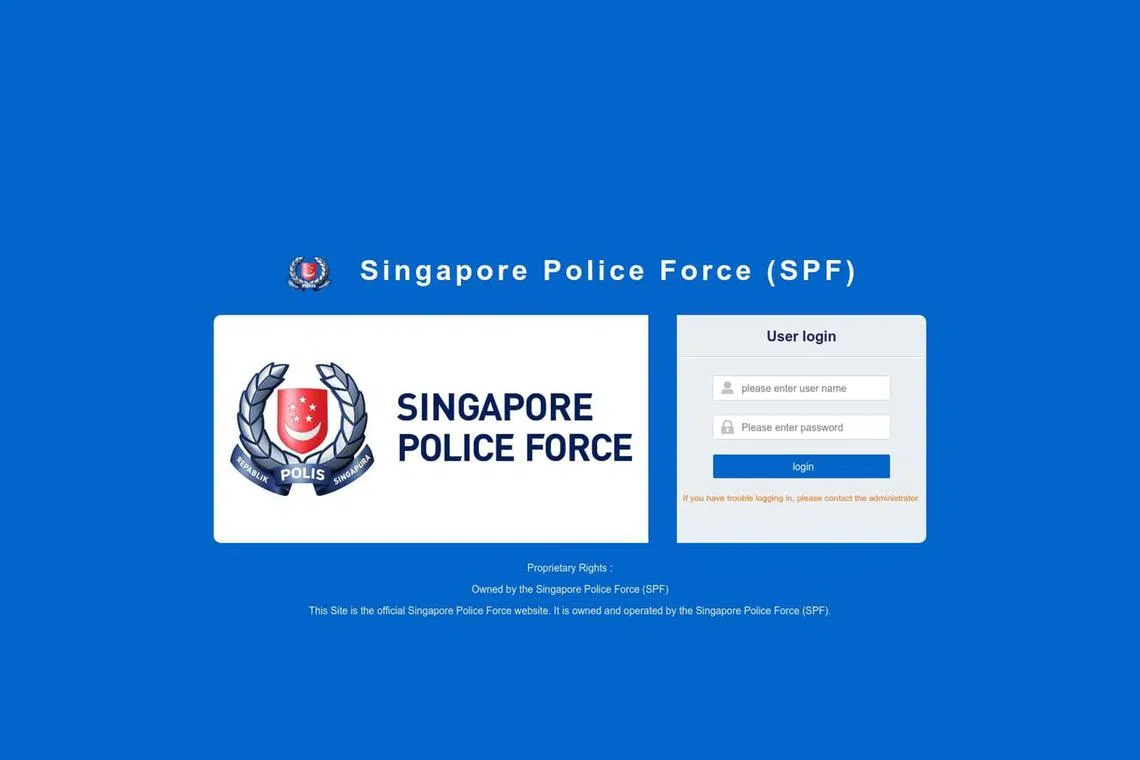‘A scam could cost someone’s life’: Why GovTech fights scammers
Sign up now: Get ST's newsletters delivered to your inbox

Mr Mark Chen (left) and Mr Andre Ng, from the Government Technology Agency’s anti-scam products team, plan to expand Satis’ coverage to online advertisements.
ST PHOTO: JASON QUAH
Follow topic:
SINGAPORE - When Mr Mark Chen read about a police full-time national serviceman who died by suicide in 2021 after losing over $10,000 in a scam, his heart ached.
Finnegan Tan Yao Jie was only 21 when he was found with a gunshot wound to the head.
Mr Chen, principal product manager of the Government Technology Agency’s (GovTech) anti-scam products team, told The Straits Times in July that this case spurred him to want to tackle scams.
He said: “It just broke my heart. Some people may think that $10,000 isn’t a lot, but for the victim, it was too much.
“Some may see scams as an economic problem, but it is not just about losing money. Scams hurt, and it could cost someone’s life.”
Mr Chen and Mr Andre Ng, assistant director at GovTech’s anti-scam products team, explained how the agency tries to stop scammers.
One way is through the Scam Analytics and Tactical Intervention System (Satis), developed by GovTech and the Ministry of Home Affairs, to detect and quickly take down scam sites.
Since Satis was rolled out in July 2023, it has taken down over 42,000 scam sites, including those impersonating the Singapore Police Force, government agencies and banks.

Satis has taken down over 42,000 scam sites, including those impersonating the Singapore Police Force.
PHOTO: GOVTECH
Mr Chen said his team plans to expand Satis’ coverage to online advertisements.
In January, GovTech saw an increase in fake websites claiming to be the official site for people to claim their Community Development Council (CDC) vouchers.
On Jan 3, the Government announced that 1.27 million Singaporean households could each claim $500 worth of the vouchers.
Mr Ng said scammers created numerous sites spoofing the real CDC voucher collection site.
“Victims are tricked into entering their personal information and banking details to ‘collect the vouchers’ on these sites and lose their money as a result,” he said.

Scammers created numerous sites claiming to be the official site for people to claim their Community Development Council vouchers.
PHOTO: GOVTECH
The councils filed a police report about these links
Mr Ng added that since February, GovTech has also seen a significant rise in websites pretending to be official government support scheme sites, a trend that continues today.
He said: “This shows that scammers take note of the news and what’s happening in Singapore. They know their victims well and will continuously resort to using different tactics to cheat as many people as they can.”
Another way that scammers have tried to hook victims was through concert ticket scams, which saw at least 2,000 victims losing at least $1 million from January to May.
Mr Chen said Satis took down numerous scam sites spoofing Ticketmaster, the official ticketing site for American singer Taylor Swift’s Eras Tour in Singapore. The fake sites claimed to sell tickets, even though tickets for the show had already been sold out.
Victims keyed in their banking details to buy tickets, but ended up getting scammed.
Concert ticket scams fall under e-commerce scams.

PHOTO: GOVTECH
According to the police’s annual scam statistics, e-commerce scam cases more than doubled in 2023, with 9,783 cases
Mr Chen said scammers should not be underestimated, especially with the growing use of artificial intelligence (AI).
He said: “While AI can be helpful to us in tackling scams, it is also a good tool for scammers. We need to remember that whatever technology is available to us is also available to them.”
His team has seen more examples of AI being used in scams, such as when scammers create deepfakes of politicians and celebrities to convince people to invest in certain financial schemes.
In June, Senior Minister Lee Hsien Loong warned Singaporeans that a video of him promoting an investment scheme on social media was a deepfake.
Scammers had mimicked his voice and layered fake audio over actual footage of him delivering the 2023 National Day message.
In July, the Cyber Security Agency of Singapore said around 13 per cent of phishing scams analysed by the agency were probably generated by AI.
Mr Chen said scammers are like businessmen, constantly finding ways to grow their “businesses”.
He added: “We have to think of scammers as sophisticated entities focused on profits. We shouldn’t underestimate what they can do.”
Sometimes, a scam can hit too close to home.
Mr Ng said his 64-year-old mother almost fell for a phishing scam in 2024.
She had keyed in her banking details on a website, but had avoided getting scammed when she called him to check if she should provide her two-factor authentication code.
Stressing the importance of being vigilant, Mr Ng said: “Stopping to think before keying in your details into a site can prevent your savings from being stolen.”
Emphasising the impact scams can have on victims, Mr Chen added: “As engineers, we can measure how many sites we take down, or how much money is lost to scams.
“But the psychological turmoil that victims go through is something that can never be measured.”
Red flags
Scammers may spoof a legitimate domain (for example, straitstimes.com) and add more letters behind it to trick victims (for example, straitstimes.com.sg-site.com). Do not click on such deceptive links.
Always verify suspicious URLs against the URL of the legitimate organisation before clicking on it.
Singapore Government websites should have “.gov.sg” in their URLs.
Scammers may hide malicious links using URL shorteners. Copy and paste the shortened URL into an unshortening service such as
unshorten.it
orcheckshorturl.com
. These services reveal the final destination of a shortened URL without actually visiting the link.Due to generative AI, blurry photos and bad grammar are no longer good indicators that a site is malicious.
If unsure, call the Anti-Scam Hotline on 1800-722-6688.
Source: GovTech

Helplines and online resources
Institute of Mental Health’s Mental Health Helpline: 6389-2222


